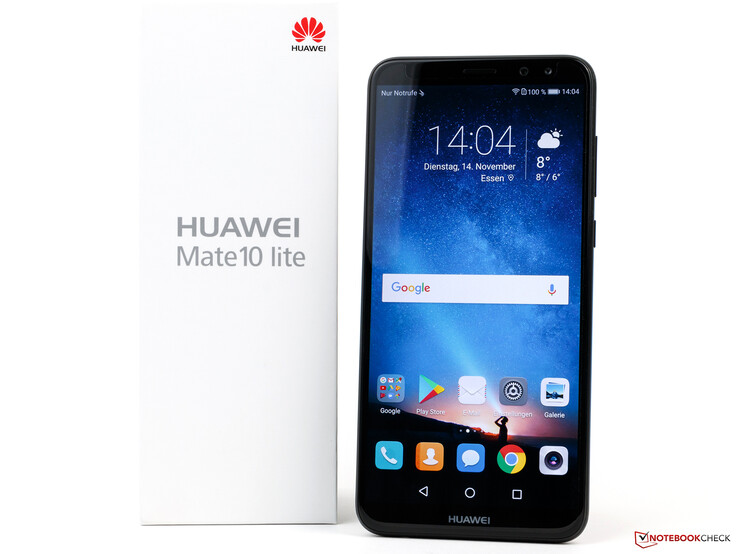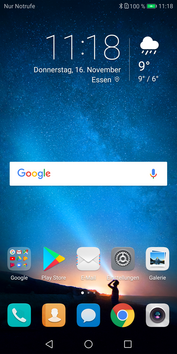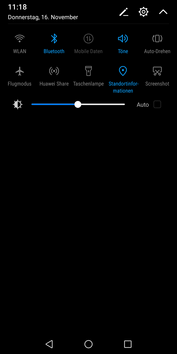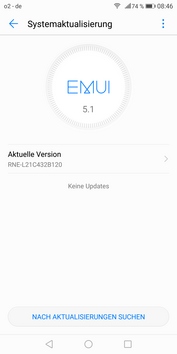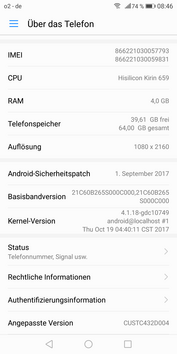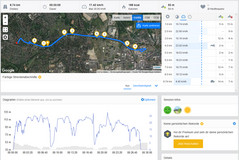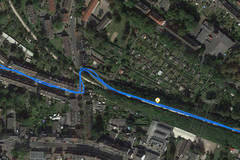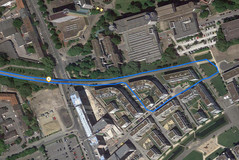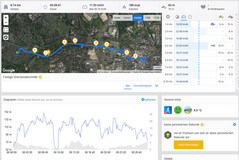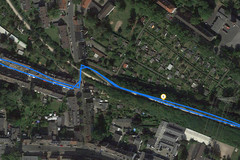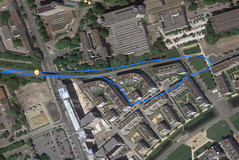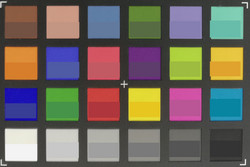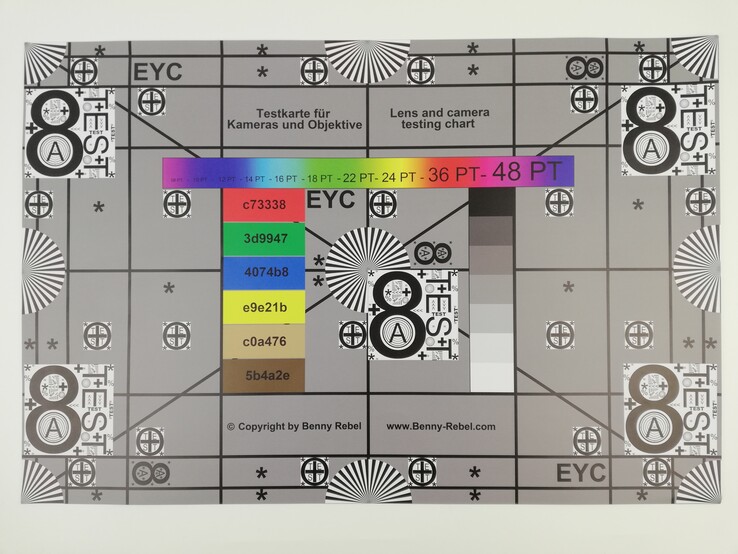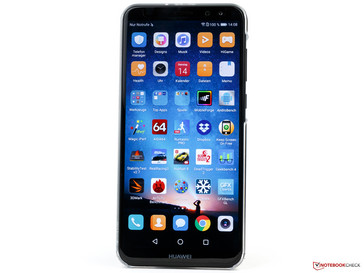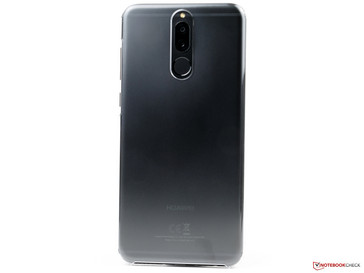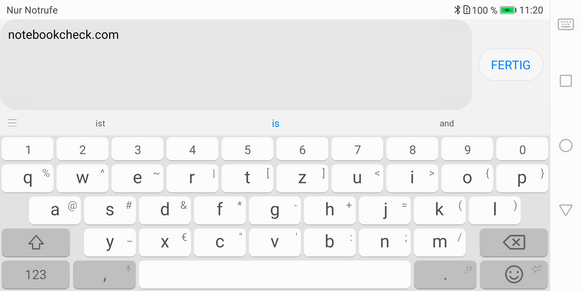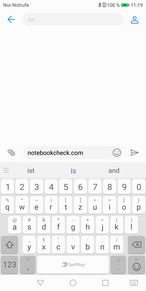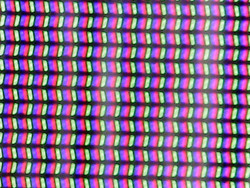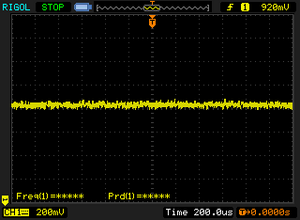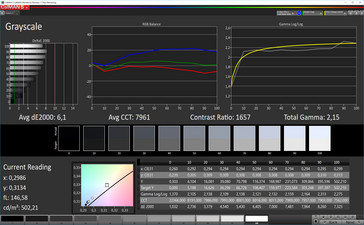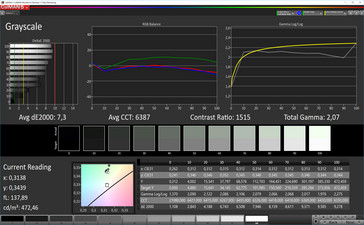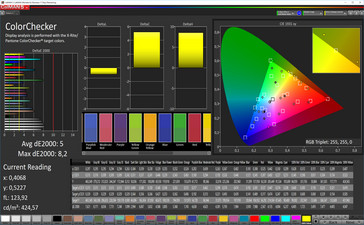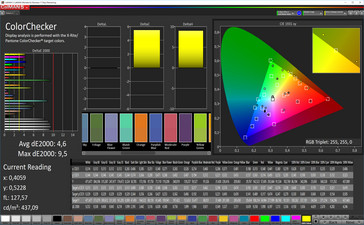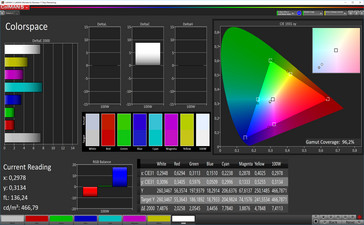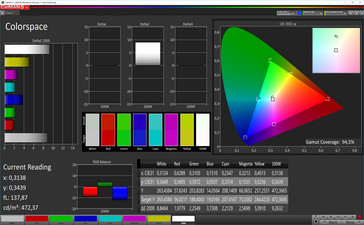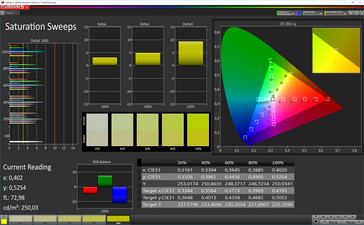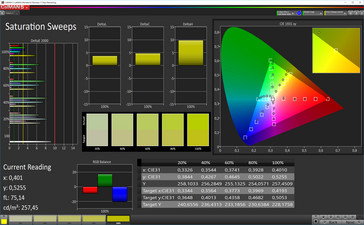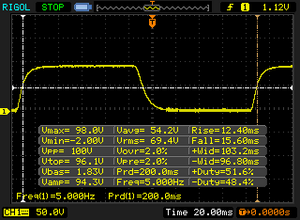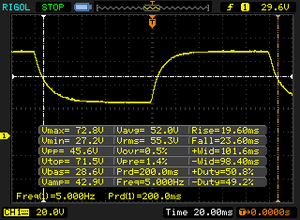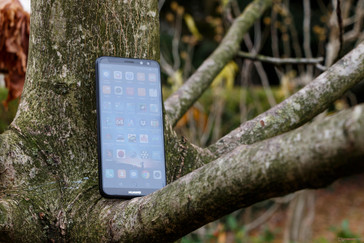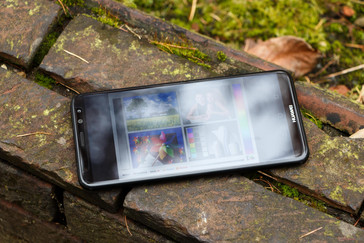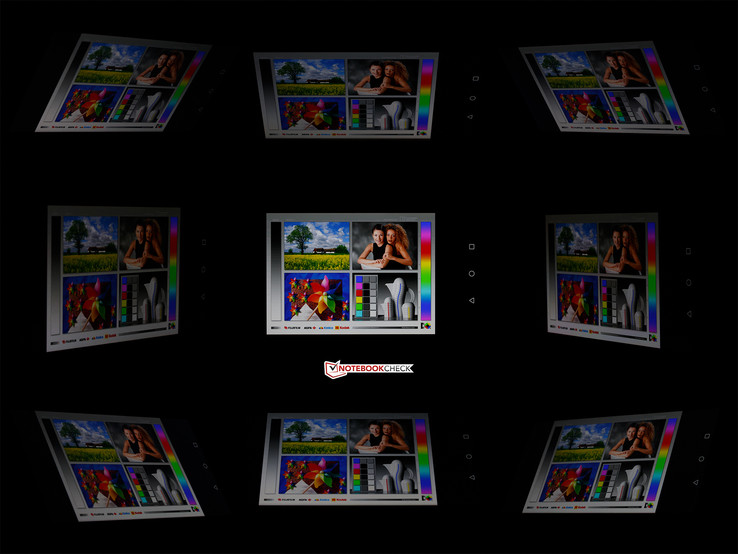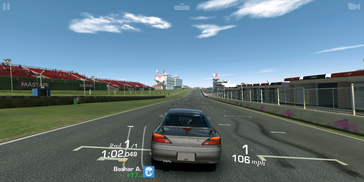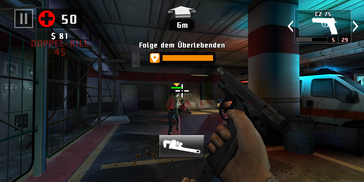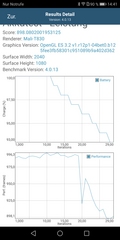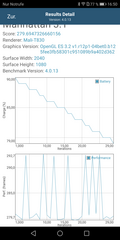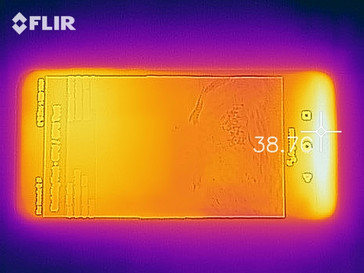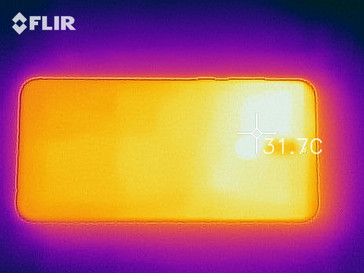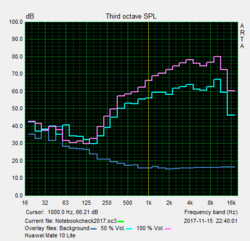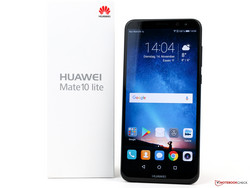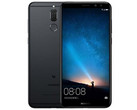Huawei Mate 10 Lite Smartphone Review
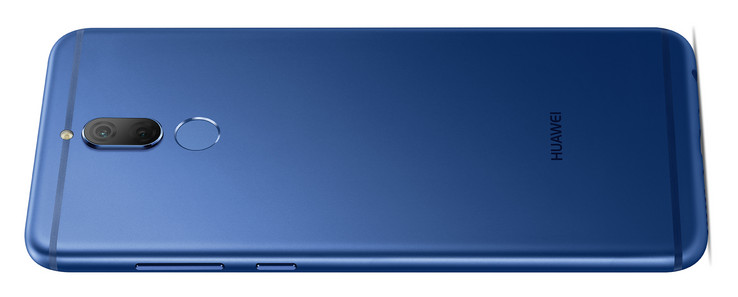
For the original German review, see here.
The Huawei Mate 10 Lite, equipped with a 5.9-inch 2:1 IPS display, features the same mid-range SoC as the Nova 2, dual cameras front and back, a decently sized 3340 mAh battery that is nowhere near the Mate 10 Pro’s 4000 mAh battery, 4 GB of RAM and an expandable 64 GB of storage (microSD). So far so good, but truth be told it does not really have anything in common with the Mate 10 or Mate 10 Pro.
Similarly sized smartphones are scarce but there are quite a few rather interesting mid-range alternatives, such as for example the Samsung Galaxy A5, the HTC U Ultra, the BQ Aquaris X Pro, the ZTE Axon 7, or the slightly more expensive Honor 9. Tough competition for the Mate 10 Lite - let us find out why it turned out to be a viable alternative either way, shall we?
Case
Like its larger sibling, the Mate 10 Lite features a very respectable screen to body ratio. Thanks to its 2:1 display, it is fairly narrow and therefore easy and comfortable to hold. The phone’s official thickness as specified by Huawei is 7.5 mm (~0.29 in), however we suspect this to be an average that was calculated by including the rounded edges as our measurements revealed a thickness of 7.65 mm (~0.30 in). At 1.35 mm (~0.05 in), the camera protrudes quite a bit from the aluminum case, and therefore the phone wobbles when placed face up on the table.
Manufacturing quality is very decent, with narrow and consistent gaps and a card slot that sits flush with the rest of the case that is made of aluminum on the outside and a rather flimsy plastic on the inside. Torsional forces do not result in any creaking whatsoever, but the case does flex noticeably even with only minor force applied. Applying force to the display panel itself will result in a minor ripple effect.
The Mate 10 Lite’s battery is not user-replaceable, and unlike its two namesakes the Lite is not IP certified for dust and/or water resistance. The card slot is of hybrid nature and can take either two SIM cards or one SIM card and one microSD card. The case itself is available in Graphite Black, Prestige Gold, or Aurora Blue.
Connectivity
The Micro USB port supports USB 2.0 and is incapable of video output. However, it does support OTG and thus external peripherals such as storage or input devices.
According to Huawei, the Lite’s microSD card slot supports microSD cards with up to 128 GB (SDXC). In theory, microSD cards even bigger than that should also work. MicroSD cards cannot be formatted as internal storage, but they can be configured as default storage device for new photos and other media files. Apps are however restricted to the Lite’s internal storage.
The Mate 10 Lite supports wireless communications via Wi-Fi Direct, Miracast, and Bluetooth 4.2 but lacks an NFC chip. A notification LED is available.
Software
With EMUI 5.1 on top of Google Android 7.0 Nougat the phone is a little bit out of date. The other devices in Huawei’s Mate 10 series are already shipping with EMUI 8.0 on top of Android 8.0 Oreo. Huawei has announced an Oreo update for the 10 Lite but has not yet clarified when exactly that is going to happen. Our review unit’s firmware version was B100, and was updated to B120 shortly thereafter fixing a Wi-Fi problem we have encountered and bringing the security patch level more or less up to date (September 2017).
The user interface should already be familiar to Huawei users and is reviewed in further detail in our P10 and P10 Plus reviews.
Communication and GPS
The phone communicates via LTE Cat. 6 but only on a few select frequencies. And while the bands supported should work just fine in Europe, North American users will only be able to use band 5 on AT&T’s 4G LTE network (2, 4, 5, 12, 17) since not any of T-Mobile’s bands (2, 4, 12, 66, 71) are supported. Suffice it to say that we had absolutely no trouble whatsoever with cell reception in a major European city.
Wi-Fi is also somewhat limited and restricted to 802.11b/g/n and thus the fairly congested 2.4 GHz range. Accordingly and not surprisingly, transfer speeds measured against our Linksys EA8500 reference router were fairly low overall and the Mate 10 Lite was far behind all of its competitors. At least Wi-Fi range was decent - even at a distance of 30 ft to the access point and with an exterior wall between the two devices surfing the web was still possible, albeit with noticeable delay.
| Networking | |
| iperf3 transmit AX12 | |
| ZTE Axon 7 | |
| HTC U Ultra | |
| Samsung Galaxy A5 2017 | |
| BQ Aquaris X Pro | |
| Honor 9 | |
| Huawei Mate 10 Lite | |
| iperf3 receive AX12 | |
| ZTE Axon 7 | |
| Honor 9 | |
| HTC U Ultra | |
| BQ Aquaris X Pro | |
| Samsung Galaxy A5 2017 | |
| Huawei Mate 10 Lite | |
Supported location services include GPS, GLONASS, and BeiDou. Outdoors, location lock is obtained fairly quickly, but takes a while to figure out the devices exact position. We were able to obtain GPS lock even at the basement window, but it turned out to be rather inaccurate.
We determine a smartphone’s GPS accuracy by taking it out on a bicycle ride together with a professional Garmin Edge 500 GPS with both devices recording the track. The Mate 10 Lite ended up doing a very decent job, and the recorded tracks were more or less identical on both devices.
Telephone and Call Quality
The 10 Lite offers dual SIM capabilities in case one is willing to forgo a microSD card. Both SIM slots are 4G capable, but only the primary slot supports VoLTE. Support for Wi-Fi calling is included, and the phone app is the same as on the Huawei Mate 10 Pro.
Call quality was decent and solid with both conversational partners understanding each other perfectly fine. The device’s speakerphone worked decently as well, and the phone can be used hands free with only minor reverberations. However, noise cancelling is not the Mate 10 Lite’s strongest feature.
Cameras
The phone’s front-facing camera features two sensors, 13 + 2 MP, and an aperture of f/2.0. The second lens is used primarily for the bokeh effect in portrait mode, which works very well and can be adjusted retroactively. Image quality was comparatively decent, but quickly deteriorated into the usual noisy mushiness in bad lighting conditions.
The rear-facing 16 + 2 MP dual camera offers a moderately higher resolution, but the same set of features. Aperture is slightly worse at f/2.2 and there is no optical image stabilization whatsoever. Photos taken in bright daylight turn out very well, but lack detail when zoomed in. Dynamic range is decent, but photos tend to be overexposed, particularly around large bright areas. Low light photos turn out bland but decent overall thanks to the dual camera’s capability of capturing as much light as possible. Only when zoomed in does one notice the lack of detail and the resulting noise.
Both cameras support video capture in FHD (1920x1080) at 30 FPS with the main camera taking much better (autofocus) and more colorful and lively videos and the front-facing camera overexposing visibly. Recorded sounds are of decent quality, but suffer from a constant static.
Under controlled and normalized conditions and with the help of our ColorChecker Passport we were able to discern that colors were fairly bright and vivid. Grays were slightly too warm and whites were too bright.
Our test chart photo was crisp and sharp overall with some frayed outlines here and there, particularly so with dark elements on a dark background. Nevertheless, the level of detail was acceptable, as can be seen in the center of the photo. Sharpness deterioration towards the edges was insignificant, but slightly more pronounced in the upper parts than around the bottom.
Accessories and Warranty
Included are a modular charger (5 V, 2 A), a USB cable, a headset, a SIM tool, a translucent protective case, a warranty booklet, and a quick start guide.
By default, devices sold in Germany come with a 24-month limited warranty while US customers are limited to seller warranties. Please see our Guarantees, Return Policies & Warranties FAQ for country-specific information.
Input Devices and Handling
The capacitive touchscreen supports 10-point multitouch input and was fairly reliable and precise during our tests. The glass surface is smooth and the factory-installed screen protector can be easily removed. The glass is a real fingerprint magnet but can fortunately be wiped off very easily and quickly.
By default, Huawei devices come with the SwiftKey keyboard which, as usual, can be replaced by any other keyboard from Google’s Play Store. The physical buttons on the side are firm and tight, and their actuation is decent. Our only gripe was that they were quite hard to tell apart, which could have been mitigated by using different surface textures.
The fingerprint reader is located on the back and perfectly positioned. In our tests, it worked very fast and reliably, and in addition to user authentication it supports gestures such as scrolling or sliding down the notification area.
Display
The 2:1 IPS Full View display’s native resolution is 2160x1080, and the 5.9-inch panel is very crisp. Its average brightness of 457 nits is comparatively high and its black level of 0.3 nits comparatively low, resulting in an impressive contrast ratio of 1557:1. Results were similar during the APL50 test with enabled ambient light sensor. Overall brightness distribution was very even and homogenous.
| |||||||||||||||||||||||||
Brightness Distribution: 89 %
Center on Battery: 467 cd/m²
Contrast: 1557:1 (Black: 0.3 cd/m²)
ΔE ColorChecker Calman: 5 | ∀{0.5-29.43 Ø4.78}
ΔE Greyscale Calman: 6.1 | ∀{0.09-98 Ø5}
Gamma: 2.15
CCT: 7961 K
| Huawei Mate 10 Lite IPS, 2160x1080, 5.9" | Samsung Galaxy A5 2017 Super AMOLED, 1920x1080, 5.2" | HTC U Ultra SLCD 5, 2560x1440, 5.7" | BQ Aquaris X Pro IPS, 1920x1080, 5.2" | ZTE Axon 7 AMOLED, 2560x1440, 5.5" | Honor 9 IPS/LTPS, 1920x1080, 5.2" | |
|---|---|---|---|---|---|---|
| Screen | 42% | -2% | -38% | -13% | 13% | |
| Brightness middle (cd/m²) | 467 | 539 15% | 470 1% | 458 -2% | 328 -30% | 550 18% |
| Brightness (cd/m²) | 457 | 542 19% | 445 -3% | 473 4% | 334 -27% | 535 17% |
| Brightness Distribution (%) | 89 | 93 4% | 88 -1% | 88 -1% | 88 -1% | 92 3% |
| Black Level * (cd/m²) | 0.3 | 0.22 27% | 0.51 -70% | 0.42 -40% | ||
| Contrast (:1) | 1557 | 2136 37% | 898 -42% | 1310 -16% | ||
| Colorchecker dE 2000 * | 5 | 1.6 68% | 5.5 -10% | 7.1 -42% | 4.6 8% | 3.3 34% |
| Colorchecker dE 2000 max. * | 8.2 | 2.6 68% | 11.9 -45% | 14.5 -77% | 14.7 -79% | 4.5 45% |
| Greyscale dE 2000 * | 6.1 | 1.5 75% | 7.6 -25% | 10.5 -72% | 2.8 54% | 3.6 41% |
| Gamma | 2.15 102% | 2.28 96% | 2.2 100% | 2.28 96% | 2.29 96% | 2.38 92% |
| CCT | 7961 82% | 6422 101% | 7454 87% | 8951 73% | 6612 98% | 7226 90% |
* ... smaller is better
Screen Flickering / PWM (Pulse-Width Modulation)
| Screen flickering / PWM not detected | |||
In comparison: 53 % of all tested devices do not use PWM to dim the display. If PWM was detected, an average of 8108 (minimum: 5 - maximum: 343500) Hz was measured. | |||
Color accuracy was determined with CalMAN and a spectrophotometer. The phone supports various color temperature presets or manual adjustment.
The white point was too cool in standard mode, but only slightly so. From all of its competitors, only the Honor 9 managed to best the Mate 10 Lite. Quite often, the preset “warm” leads to a more natural color representation. Unfortunately, this is not the case with the Mate 10 Lite. While it is true that colors are more natural on “warm”, the maximum color deviations are much higher and grays turn out greenish instead, resulting in an overall sickly appeal. Color space coverage is comparatively small and geared towards the sRGB color space.
Display Response Times
| ↔ Response Time Black to White | ||
|---|---|---|
| 28 ms ... rise ↗ and fall ↘ combined | ↗ 12.4 ms rise | |
| ↘ 15.6 ms fall | ||
| The screen shows relatively slow response rates in our tests and may be too slow for gamers. In comparison, all tested devices range from 0.1 (minimum) to 240 (maximum) ms. » 70 % of all devices are better. This means that the measured response time is worse than the average of all tested devices (20.2 ms). | ||
| ↔ Response Time 50% Grey to 80% Grey | ||
| 43.2 ms ... rise ↗ and fall ↘ combined | ↗ 19.6 ms rise | |
| ↘ 23.6 ms fall | ||
| The screen shows slow response rates in our tests and will be unsatisfactory for gamers. In comparison, all tested devices range from 0.165 (minimum) to 636 (maximum) ms. » 71 % of all devices are better. This means that the measured response time is worse than the average of all tested devices (31.6 ms). | ||
Performance
The Mate 10 Lite is powered by the exact same HiSilicon Kirin 659 octa-core SoC as the Nova 2, consisting of eight Cortex A53 cores divided into two clusters with the faster of the two clusters running at up to 2.36 GHz and the slower at up to 1.7 GHz. The SoC is accompanied by 4 GB of LPDDR3 RAM and an ARM Mali-T830 MP2 GPU.
The mid-range SoC is much slower than last year’s high-end SoC powering the Honor 9, the HTC U Ultra, or the ZTE Axon 7. That said, these three phones also come with a very different price tag. The Galaxy A5 and BQ Aquaris X Pro are much closer in terms of price yet both, the Snapdragon 626 and the Exynos 7880, manage to outperform the Mate 10 Lite by up to 17%. GPU performance is even lower than on the Nova 2 given the Mate 10 Lite’s higher display resolution.
System performance is decent and the phone not only felt fast and smooth, but also performed quite well in the benchmarks without standing out. As expected, the more powerful smartphones performed better, and the X Pro was about as fast as the Mate 10 Lite thanks to its pure and clean Android. Only the Galaxy A5 was slower than the Mate 10 Lite.
| AnTuTu v6 - Total Score (sort by value) | |
| Huawei Mate 10 Lite | |
| Huawei Nova 2 | |
| HTC U Ultra | |
| BQ Aquaris X Pro | |
| Honor 9 | |
| ZTE Axon 7 | |
| Samsung Galaxy A5 2017 | |
| PCMark for Android | |
| Work performance score (sort by value) | |
| Huawei Mate 10 Lite | |
| Huawei Nova 2 | |
| HTC U Ultra | |
| BQ Aquaris X Pro | |
| Honor 9 | |
| ZTE Axon 7 | |
| Samsung Galaxy A5 2017 | |
| Work 2.0 performance score (sort by value) | |
| Huawei Mate 10 Lite | |
| Huawei Nova 2 | |
| HTC U Ultra | |
| BQ Aquaris X Pro | |
| Honor 9 | |
| Samsung Galaxy A5 2017 | |
| Geekbench 4.4 | |
| 64 Bit Single-Core Score (sort by value) | |
| Huawei Mate 10 Lite | |
| Huawei Nova 2 | |
| BQ Aquaris X Pro | |
| Honor 9 | |
| Samsung Galaxy A5 2017 | |
| 64 Bit Multi-Core Score (sort by value) | |
| Huawei Mate 10 Lite | |
| Huawei Nova 2 | |
| BQ Aquaris X Pro | |
| Honor 9 | |
| Samsung Galaxy A5 2017 | |
| Geekbench 4.0 | |
| 64 Bit Single-Core Score (sort by value) | |
| Huawei Mate 10 Lite | |
| Huawei Nova 2 | |
| HTC U Ultra | |
| BQ Aquaris X Pro | |
| ZTE Axon 7 | |
| Samsung Galaxy A5 2017 | |
| 64 Bit Multi-Core Score (sort by value) | |
| Huawei Mate 10 Lite | |
| Huawei Nova 2 | |
| HTC U Ultra | |
| BQ Aquaris X Pro | |
| ZTE Axon 7 | |
| Samsung Galaxy A5 2017 | |
| GFXBench (DX / GLBenchmark) 2.7 | |
| T-Rex Onscreen (sort by value) | |
| Huawei Mate 10 Lite | |
| Huawei Nova 2 | |
| HTC U Ultra | |
| BQ Aquaris X Pro | |
| Honor 9 | |
| ZTE Axon 7 | |
| Samsung Galaxy A5 2017 | |
| 1920x1080 T-Rex Offscreen (sort by value) | |
| Huawei Mate 10 Lite | |
| Huawei Nova 2 | |
| HTC U Ultra | |
| BQ Aquaris X Pro | |
| Honor 9 | |
| ZTE Axon 7 | |
| Samsung Galaxy A5 2017 | |
| GFXBench 3.0 | |
| on screen Manhattan Onscreen OGL (sort by value) | |
| Huawei Mate 10 Lite | |
| Huawei Nova 2 | |
| HTC U Ultra | |
| BQ Aquaris X Pro | |
| Honor 9 | |
| ZTE Axon 7 | |
| Samsung Galaxy A5 2017 | |
| 1920x1080 1080p Manhattan Offscreen (sort by value) | |
| Huawei Mate 10 Lite | |
| Huawei Nova 2 | |
| HTC U Ultra | |
| BQ Aquaris X Pro | |
| Honor 9 | |
| ZTE Axon 7 | |
| Samsung Galaxy A5 2017 | |
| GFXBench 3.1 | |
| on screen Manhattan ES 3.1 Onscreen (sort by value) | |
| Huawei Mate 10 Lite | |
| Huawei Nova 2 | |
| HTC U Ultra | |
| BQ Aquaris X Pro | |
| Honor 9 | |
| ZTE Axon 7 | |
| Samsung Galaxy A5 2017 | |
| 1920x1080 Manhattan ES 3.1 Offscreen (sort by value) | |
| Huawei Mate 10 Lite | |
| Huawei Nova 2 | |
| HTC U Ultra | |
| BQ Aquaris X Pro | |
| Honor 9 | |
| ZTE Axon 7 | |
| Samsung Galaxy A5 2017 | |
| GFXBench | |
| on screen Car Chase Onscreen (sort by value) | |
| Huawei Mate 10 Lite | |
| Huawei Nova 2 | |
| HTC U Ultra | |
| BQ Aquaris X Pro | |
| Honor 9 | |
| ZTE Axon 7 | |
| Samsung Galaxy A5 2017 | |
| 1920x1080 Car Chase Offscreen (sort by value) | |
| Huawei Mate 10 Lite | |
| Huawei Nova 2 | |
| HTC U Ultra | |
| BQ Aquaris X Pro | |
| Honor 9 | |
| ZTE Axon 7 | |
| Samsung Galaxy A5 2017 | |
| Lightmark - 1920x1080 1080p (sort by value) | |
| Huawei Nova 2 | |
| Basemark X 1.1 | |
| Medium Quality (sort by value) | |
| Huawei Nova 2 | |
| High Quality (sort by value) | |
| Huawei Nova 2 | |
| Basemark ES 3.1 / Metal - offscreen Overall Score (sort by value) | |
| Huawei Nova 2 | |
| Samsung Galaxy A5 2017 | |
| Epic Citadel - Ultra High Quality (sort by value) | |
| Huawei Nova 2 | |
In our browser benchmarks, which were conducted with the preinstalled version of Chrome (62), the Mate 10 Lite performed as expected. Only in the WebXPRT 2015 benchmark was it able to break away from the BQ and the Samsung. Subjectively speaking browsing the web was very fast and smooth regardless of website complexity.
| JetStream 1.1 - Total Score | |
| Honor 9 (Chrome 59) | |
| HTC U Ultra (Chrome 56) | |
| ZTE Axon 7 (Chrome 53.0.2785.124) | |
| Samsung Galaxy A5 2017 (Samsung Browser (Chrome 44)) | |
| Huawei Mate 10 Lite (Chrome 62) | |
| Huawei Nova 2 (Chrome 60.0.3112.116) | |
| BQ Aquaris X Pro (Chrome 59.0.3071.125) | |
| Octane V2 - Total Score | |
| Honor 9 (Chrome 59) | |
| ZTE Axon 7 (Chrome 53.0.2785.124) | |
| HTC U Ultra (Chrome 56) | |
| Samsung Galaxy A5 2017 (Samsung Browser (Chrome 44)) | |
| Huawei Mate 10 Lite (Chrome 62) | |
| Huawei Nova 2 (Chrome 60.0.3112.116) | |
| BQ Aquaris X Pro (Chrome 59.0.3071.125) | |
| Mozilla Kraken 1.1 - Total | |
| Huawei Nova 2 (Chrome 60.0.3112.116) | |
| BQ Aquaris X Pro (Chrome 59.0.3071.125) | |
| Huawei Mate 10 Lite (Chrome 62) | |
| Samsung Galaxy A5 2017 (Samsung Browser (Chrome 44)) | |
| HTC U Ultra (Chrome 56) | |
| Honor 9 (Chrome 59) | |
| ZTE Axon 7 (Chrome 53.0.2785.124) | |
| WebXPRT 2015 - Overall | |
| ZTE Axon 7 (Chrome 53.0.2785.124) | |
| Honor 9 (Chrome 59) | |
| Huawei Mate 10 Lite (Chrome 62) | |
| Huawei Nova 2 (Chrome 60.0.3112.116) | |
| Samsung Galaxy A5 2017 (Samsung Browser (Chrome 44)) | |
| BQ Aquaris X Pro (Chrome 59.0.3071.125) | |
* ... smaller is better
The Mate 10 Lite is equipped with 64 GB of eMMC flash storage, about 51.5 GB of which is available out of the box. It performed fairly well, but was unable to keep up with UHS equipped devices.
MicroSD card reader performance is determined with our Toshiba Exceria Pro M501 reference card (max. read: 270 MB/s, max. write: 150 MB/s). Suffice it to say that only the Honor 9 was even slower than the Mate 10 Lite in this test.
| Huawei Mate 10 Lite | Samsung Galaxy A5 2017 | HTC U Ultra | BQ Aquaris X Pro | ZTE Axon 7 | Honor 9 | |
|---|---|---|---|---|---|---|
| AndroBench 3-5 | -8% | 64% | 15% | 74% | 49% | |
| Sequential Read 256KB (MB/s) | 286.8 | 182 -37% | 423.9 48% | 270.5 -6% | 406.5 42% | 293 2% |
| Sequential Write 256KB (MB/s) | 99.8 | 77.1 -23% | 164.7 65% | 139.6 40% | 150.9 51% | 204 104% |
| Random Read 4KB (MB/s) | 31.5 | 22.41 -29% | 84.2 167% | 37.97 21% | 121.1 284% | 55.7 77% |
| Random Write 4KB (MB/s) | 15.26 | 12.13 -21% | 13.7 -10% | 12.07 -21% | 16.22 6% | 32.7 114% |
| Sequential Read 256KB SDCard (MB/s) | 69.1 ? | 73.7 ? 7% | 82.8 ? 20% | 78.7 ? 14% | 78.4 ? 13% | 68 ? -2% |
| Sequential Write 256KB SDCard (MB/s) | 35.35 ? | 56 ? 58% | 67.6 ? 91% | 49.77 ? 41% | 51.3 ? 45% | 34.64 ? -2% |
Gaming
The Mate 10 Lite’s GPU was unable to cope with demanding games. We had to lower the level of details in “Asphalt 8” in order to run this game smoothly, and the performance of “Real Race 3” was borderline smooth at best. “Dead Trigger 2” was limited to 30 FPS to begin with. Still, all games from Google’s Play Store are definitely playable albeit sometimes with reduced details and occasional stuttering.
On the other hand, the Mate 10 Lite’s 18:9 display is excellent when gaming and offers tons of screen real estate, particularly with game controls on screen. Input detection was very accurate and fast, and the sensors worked flawlessly while gaming and detected movements accurately and instantaneously.
| Real Racing 3 | |||
| Settings | Value | ||
| high | 26 fps | ||
| Asphalt 8: Airborne | |||
| Settings | Value | ||
| high | 22 fps | ||
| very low | 30 fps | ||
| Dead Trigger 2 | |||
| Settings | Value | ||
| high | 30 fps | ||
Emissions
Temperature
Surface temperatures were at an acceptable level. The smartphone stayed comparatively cool when idle and became lukewarm at best under load.
We use GFXBench’s battery test to determine the SoCs sustained load capabilities by running the test 30x in a loop and recording battery percentage as well as frame rates. In the less demanding T-Rex benchmark (OpenGL ES 2.0) performance was very consistent and decreased slightly after the 19th iteration (merely by around 10%). The more demanding Manhattan benchmark (OpenGL ES 3.1) was even completed without any throttling whatsoever, most probably because performance was pretty poor to begin with.
(+) The maximum temperature on the upper side is 35.5 °C / 96 F, compared to the average of 35.2 °C / 95 F, ranging from 21.9 to 247 °C for the class Smartphone.
(+) The bottom heats up to a maximum of 31.3 °C / 88 F, compared to the average of 34 °C / 93 F
(+) In idle usage, the average temperature for the upper side is 28.8 °C / 84 F, compared to the device average of 32.9 °C / 91 F.
Speakers
Equipped with a mono speaker, the Huawei Mate 10 Lite offers a somewhat decent sound performance as long as volume remains at low to medium levels with fairly balanced mids and highs. Higher levels of volume result in increased highs and decreased mids. Lows (bass) are absent regardless of volume level. Unfortunately, Huawei has decided not to reuse the Pro’s dual speakers, but at least at 86 dB(A) the single speaker is fairly loud.
Unlike the Nova 2, the Mate 10 Lite does not support high-resolution Bluetooth audio transmission via aptX. The 3.5 mm headphone jack worked as well as expected, and audio output was smooth and clear.
Huawei Mate 10 Lite audio analysis
(+) | speakers can play relatively loud (86.5 dB)
Bass 100 - 315 Hz
(-) | nearly no bass - on average 28% lower than median
(±) | linearity of bass is average (7.3% delta to prev. frequency)
Mids 400 - 2000 Hz
(±) | reduced mids - on average 5% lower than median
(+) | mids are linear (5.7% delta to prev. frequency)
Highs 2 - 16 kHz
(±) | higher highs - on average 10.5% higher than median
(+) | highs are linear (4.2% delta to prev. frequency)
Overall 100 - 16.000 Hz
(±) | linearity of overall sound is average (25.5% difference to median)
Compared to same class
» 63% of all tested devices in this class were better, 7% similar, 30% worse
» The best had a delta of 11%, average was 35%, worst was 134%
Compared to all devices tested
» 78% of all tested devices were better, 5% similar, 18% worse
» The best had a delta of 4%, average was 24%, worst was 134%
HTC U Ultra audio analysis
(+) | speakers can play relatively loud (86 dB)
Bass 100 - 315 Hz
(-) | nearly no bass - on average 27.3% lower than median
(±) | linearity of bass is average (10.1% delta to prev. frequency)
Mids 400 - 2000 Hz
(+) | balanced mids - only 4.4% away from median
(+) | mids are linear (6.6% delta to prev. frequency)
Highs 2 - 16 kHz
(±) | higher highs - on average 12.1% higher than median
(+) | highs are linear (6.3% delta to prev. frequency)
Overall 100 - 16.000 Hz
(±) | linearity of overall sound is average (29% difference to median)
Compared to same class
» 76% of all tested devices in this class were better, 3% similar, 21% worse
» The best had a delta of 11%, average was 35%, worst was 134%
Compared to all devices tested
» 87% of all tested devices were better, 2% similar, 11% worse
» The best had a delta of 4%, average was 24%, worst was 134%
Samsung Galaxy A5 2017 audio analysis
(+) | speakers can play relatively loud (83 dB)
Bass 100 - 315 Hz
(-) | nearly no bass - on average 15.5% lower than median
(±) | linearity of bass is average (9.1% delta to prev. frequency)
Mids 400 - 2000 Hz
(±) | higher mids - on average 9.4% higher than median
(±) | linearity of mids is average (7.6% delta to prev. frequency)
Highs 2 - 16 kHz
(±) | higher highs - on average 5% higher than median
(±) | linearity of highs is average (7.6% delta to prev. frequency)
Overall 100 - 16.000 Hz
(±) | linearity of overall sound is average (23.6% difference to median)
Compared to same class
» 53% of all tested devices in this class were better, 8% similar, 39% worse
» The best had a delta of 11%, average was 35%, worst was 134%
Compared to all devices tested
» 70% of all tested devices were better, 6% similar, 24% worse
» The best had a delta of 4%, average was 24%, worst was 134%
Frequency diagram (checkboxes selectable/deselectable!)
Battery Life
Power Consumption
Compared to the HTC U Ultra, the Mate 10 Lite’s power consumption was slightly lower overall. However, the slightly smaller Galaxy S8 was even more efficient than our review unit.
While support for Huawei Super Charge is missing, the Mate 10 Lite does come with support for QuickCharge. Charging the phone with the included charger from near empty to 100% takes around 2.5 hours.
| Off / Standby | |
| Idle | |
| Load |
|
Key:
min: | |
| Huawei Mate 10 Lite 3340 mAh | Samsung Galaxy S8 3000 mAh | HTC U Ultra 3000 mAh | BQ Aquaris X Pro 3100 mAh | Honor 9 3200 mAh | ZTE Axon 7 3250 mAh | Samsung Galaxy A5 2017 3000 mAh | |
|---|---|---|---|---|---|---|---|
| Power Consumption | 20% | -38% | 6% | -24% | -1% | 33% | |
| Idle Minimum * (Watt) | 0.87 | 0.78 10% | 1 -15% | 0.67 23% | 1.13 -30% | 0.64 26% | 0.64 26% |
| Idle Average * (Watt) | 2.14 | 1.1 49% | 2.41 -13% | 1.7 21% | 2.25 -5% | 0.84 61% | 1.36 36% |
| Idle Maximum * (Watt) | 2.16 | 1.16 46% | 2.46 -14% | 1.78 18% | 2.3 -6% | 0.87 60% | 1.4 35% |
| Load Average * (Watt) | 3.7 | 4.15 -12% | 6.8 -84% | 4.42 -19% | 4.89 -32% | 6.02 -63% | 2.53 32% |
| Load Maximum * (Watt) | 5.48 | 5.12 7% | 8.9 -62% | 6.3 -15% | 7.99 -46% | 10.45 -91% | 3.63 34% |
* ... smaller is better
Battery Life
With only 3340 mAh the Mate 10 Lite’s battery is significantly smaller than the other Mate 10 series batteries. Combined with the somewhat decent yet not overly impressive power consumption, battery life is quite decent albeit shorter than expected. That said, its closest competitors outran the Mate 10 Lite in pretty much every battery test we conducted.
The Galaxy A5 and BQ Aquaris X Pro in particular lasted significantly longer than the Mate 10 Lite. Huawei does however include various power saving presets that can help to improve battery life.
| Huawei Mate 10 Lite 3340 mAh | Samsung Galaxy A5 2017 3000 mAh | HTC U Ultra 3000 mAh | BQ Aquaris X Pro 3100 mAh | ZTE Axon 7 3250 mAh | Honor 9 3200 mAh | |
|---|---|---|---|---|---|---|
| Battery runtime | 95% | 15% | 35% | 20% | 14% | |
| Reader / Idle (h) | 19.2 | 40.3 110% | 26.1 36% | 30.7 60% | 28.9 51% | 23.3 21% |
| H.264 (h) | 8.4 | 16.4 95% | 10.1 20% | 10.7 27% | 11.7 39% | 9.4 12% |
| WiFi v1.3 (h) | 8.7 | 14.1 62% | 9.1 5% | 12.2 40% | 6.9 -21% | 8.6 -1% |
| Load (h) | 3.7 | 7.8 111% | 3.6 -3% | 4.2 14% | 4.1 11% | 4.6 24% |
Pros
Cons
Verdict
The smallest and most affordable member of the Mate 10 family turned out to be very interesting indeed. Unfortunately, the competition in its chosen field is immense, and the Mate 10 Lite’s one and only unique feature is its 18:9 5.9-inch display with an excellent screen to body ratio. Further features include hybrid SIM, 4 GB of RAM, 64 GB of internal storage that is expandable via microSD, and dual cameras on both sides of the phone. Overall, the package feels like a larger version of the Nova 2, and we liked the Mate 10 Lite’s front-facing camera better than the massive megapixel beast of the former.
Apart from its name, the Mate 10 Lite has little in common with the Mate series in general. It is, however, a fairly decent smartphone.
Panel size aside the Huawei Mate 10 Lite has little in common with the other two members of the Mate family. It lacks NFC, the battery is smaller, the SoC is much slower, the Leica dual camera setup is nowhere to be seen, aptX for high-resolution Bluetooth audio is not supported and instead of Super Charge it only supports QuickCharge.
All things considered, it still turned out to be a fairly decent smartphone, particularly for those who prefer their smartphone screens to be big and massive. We would have wished for fewer compromises when compared with its two larger siblings though, and battery life could have been a bit better to boot.
Huawei Mate 10 Lite
- 11/27/2017 v6 (old)
Daniel Schmidt




